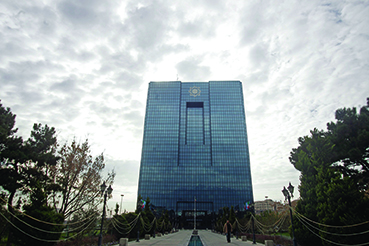Declining inflation and an improving macroeconomic environment will boost the outlook for Iranian banks in 2014 and 2015, and the industry will return to growth this year, a report by Business Monitor International said.
According to the BMI’s Q4 2014 report, profitability will remain low due to the elevated non-performing loan ratio and the dominance of highly leveraged state-owned banks.
Risks to systemic stability in the Iranian banking sector have eased, the report said. “Total assets expanded by 12.1% year-on-year (y-o-y) in real terms in February - having shrunk by an average of 13.4% y-o-y in real terms in 2013. This was mainly the result of declining price pressure; consumer price index (CPI) inflation fell to 22.8% in February, compared with the average of 35.6% recorded over FY2013/14 (fiscal year running from March 21 2013 to March 20 2014).”
BMI forecast CPI to average 25.0% in FY2014/15 and 19.0% in FY2015/16. Low base effects and a gradual improvement in investor and consumer confidence have led to improving conditions for banks, a trend we expect to continue over the coming months. “We forecast total assets to expand by 7.0% in real terms in both FY2014/15 and FY2015/16.”
Deposits Growing Significantly
The report forecast that deposit growth will remain in positive territory over the coming quarters. “Deposits returned to growth of 9.2% in February, compared with an average 10.6% decline in 2013. Elevated price pressure dramatically decreased the attractiveness of putting deposits in banks in Iran over the past few years, though this dynamic has eased. Coupled with low base effects and improving macroeconomic conditions, this will ensure that the recovery in deposits continues. We project deposits to expand by 7.0% in real terms in FY2014/15 and 6.0% in FY2015/16.
While lending growth will be slower, BMI expects real lending growth to return to positive territory over the coming quarters; however, the pace of expansion will remain slower than deposit growth. Loans contracted by 1.8% y-o-y in February, compared with an average contraction of 21.1% in 2013.
“We forecast real GDP growth in Iran expanding by 3.2% and 2.7% in real terms in 2014 and 2015, from our estimate of a 2.9% contraction in 2013. However, with the non-performing loans ratio currently standing within the 15-25% band, the improvement in the macroeconomic environment will only in part be reflected in an expansion in lending. We project client loans to expand by 1.0% in real terms in the current fiscal year and 3.0% in the next,” the quarterly report said.
Profitability Limited Despite Reduced Risks
The improving macroeconomic conditions will decrease risks of bank defaults in 2014 and 2015. However, the issue of bad loans and the dominance of highly leveraged state-owned banks in the financial system will remain key constraints to profitability, BMI said in it report. “Monetary authorities and the government have highlighted the need to reform the banking sector over the past few quarters. However, technical, political and institutional challenges will slow the pace of reform, with effects likely to be felt only in a few years.”
In addition, the report said it believes that talks between the P5+1 and Iran on Tehran’s nuclear energy program will continue over the coming months, and key banking sanctions will remain in place. “Even if a breakthrough in talks occurrs, lifting sanctions will take at least a few quarters, and Iranian financial entities will find it virtually impossible to raise capital in international bond markets.


